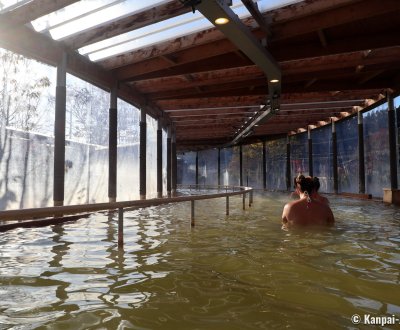Nagayu Onsen in Taketa
The Sparkling Spring Water Village in Oita
Nagayu Onsen is the name of the sparkling hot springs of Taketa City, located at the foot of the Kuju mountain range in Oita prefecture, in the north-east of Kyushu Island in Japan. Thermal tourism is well developed here with a large choice of accommodation types from modern complex resorts to traditional ryokan inns and therapeutic baths.
Nagayu Onsen ♨️ spa resort stems from Naoirimachi, one of the neighborhoods of the small Taketa City. Its water is rich in carbon and therefore naturally sparkling. Good for the health, Nagayu spring 🌸 is famous for relieving muscle pain, high blood pressure, rheumatism, joint stiffness, chronic bowel disease and inflammation such as sprains. One can either bath into the water or drink it.
Most of the bath establishments are located along the Serikawa River, with a few public facilities such as the outdoor bath Ganiyu (or "crab bath") whose access is free day and night, or the Gozenyu therapeutic center that welcomes onsen amateurs only on the daytime. The short list below is a selection of sites and activities to enjoy Taketa and its onsen.
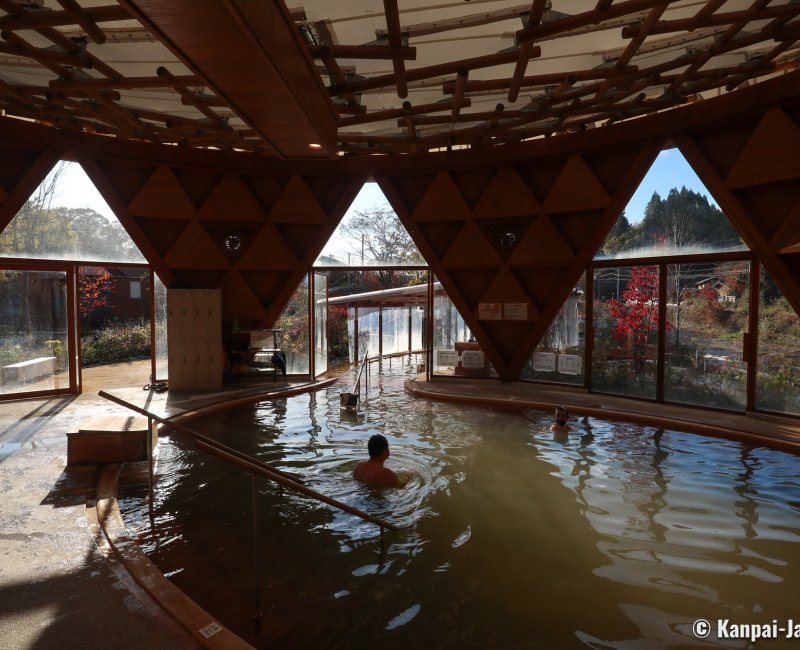
Kur Park Nagayu spa resort
Opened in April 2019, Kur Park Nagayu is a large and modern spa facility also offering all-inclusive stays in cottages. The resort is inspired by Germany’s practice of thermal baths, and its name "kur" means "to heal" in German. Contrary to the classical Japanese baths where one relaxes a few minutes in a very hot water (of a temperature about 40°C / 104°F), the water temperature in Kur Park Nagayu’s pools is 25°C / 77°F on average, which allows to stay longer and thoroughly absorb the water’s carbon without risking a heatstroke.
Part of the bath is mixed and accessible wearing a swimsuit, which are also available for rent on site. There are various installations, such as a Jacuzzi and a walking corridor opened on the outdoor. Traditional onsen are also available for a comprehensive range of baths of both Japanese and Western-style.
The wooden structure buildings were designed by Japanese architect Shigeru Ban, who was awarded the Pritzker Prize in 2014 and was one of the designer of the Centre Pompidou-Metz. The concept of "therapy in the heart of nature" is delivered here in refined and welcoming cottages, as well as in a shared restaurant room offering healthy and balanced meals every day.
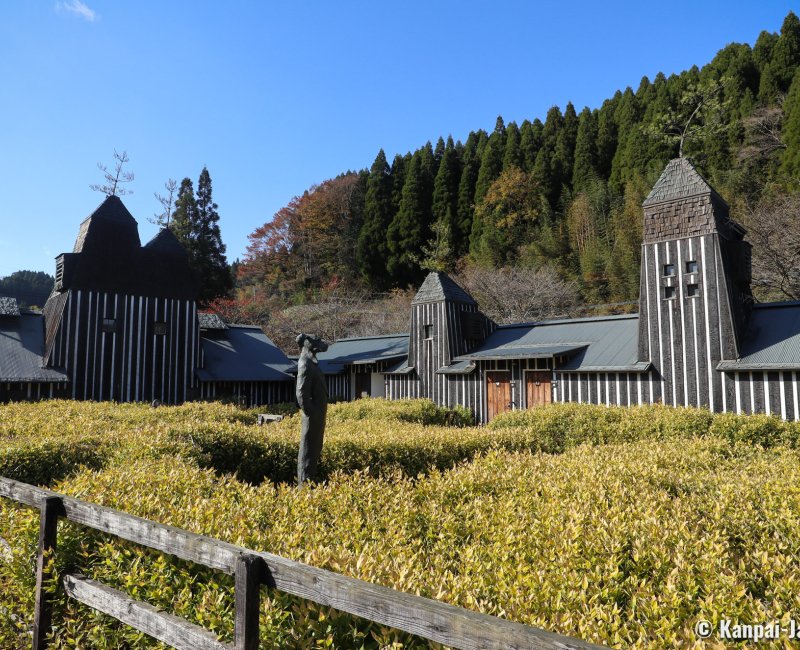
Ramune Onsen’s sparkling waters
Lamune (or Ramune) Onsen is the most sparkling spring of Taketa, with a 1,000mg carbon per liter rate. You just have to put your hand in the water to see and feel the countless fine bubbles of carbon dioxide.
This natural sparkling water was officially recognized in 2005 for its properties for the body. To enjoy the water’s benefits, you can bath in it or drink it from the source, as its conservation in bottle is not optimal. This specificity attracts Japanese visitors from throughout the archipelago, but the place is certainly filled on a daily basis by rather aged locals.
The Lamune baths are sheltered in houses designed by architect Terunobu Fujimori in the early 2000s. They are easily recognizable thanks to their unusual western style, with black and white stripes on the facades and bronze tiles roofs. The top of the roofs are decorated with Japanese pine trees branches, a symbol of longevity aimed at visitors.
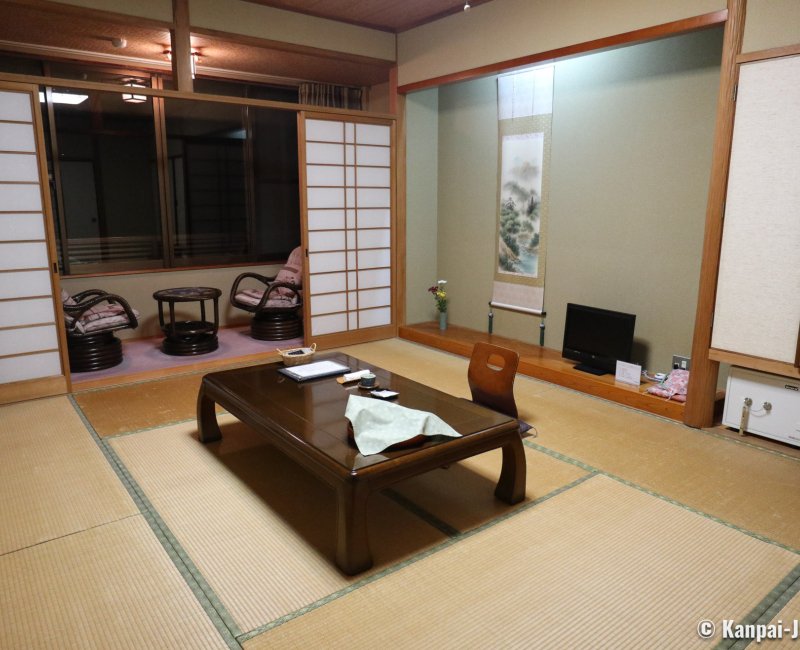
Staying at a ryokan in Taketa
Other landscapes of Taketa City are to be discovered when moving away from Nagayu Onsen’s baths. Not far from its historical downtown, where one can visit the ruins of Oka Castle 🏯, the inn Chikuden Saryo enjoys a very pleasant location on the heights of the city, with beautiful sunrises and sunsets on the valley.
Kaiseki cuisine can be enjoyed for dinner and breakfast. The menu is composed with seasonal ingredients and all dishes are prepared with Taketa’s spring water. One of the specialty is the Tofu Dengaku which consists of delicious skewered tofu covered with miso paste and grilled on a wood fire 🔥.
The tatami rooms are quite large, well decorated and comfortable. The onsen baths have a classic layout and are recommended after a good meal to sleep like a baby. Chikuden Saryo allows a complete immersion in the traditional Japanese wellness tourism.
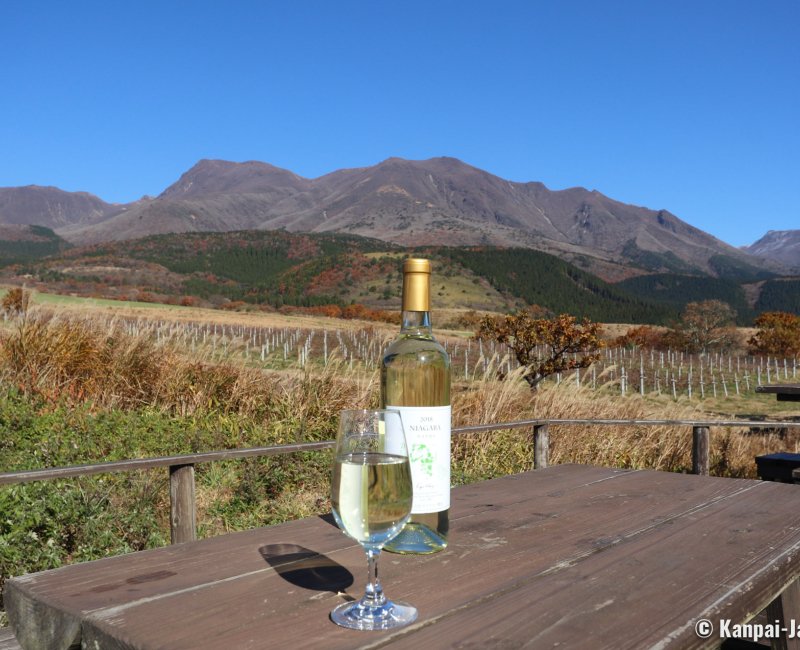
Excursion in Aso-Kuju National Park
Located at the foot of the Kuju Mounts, Taketa is surrounded by a high mountain range culminating 1,700 meters above sea level, which rewarded it the nickname of "Kyushu Island’s roof". It offers a good occasion to go hiking in the Aso-Kuju National Park to also rejuvenate the mind after warming up the body in the hot springs.
Kuju Winery is located about half an hour ride by car 🚙 from the city center. Despite the frequent typhoons 🌀 hitting the area, 6 hectares of vines and 7 grape varieties, such as Muscat, Bailey A or the 100 % Japanese Yama Budo are grown on these lands. Among the bottled wines, the Kushi Furu No Yume is typical of the area. On site, one can admire the immensity of the landscape, a glass of wine in the hand.
Nagayu Onsen and more broadly Takata City are beautiful representatives for tourism in Oita prefecture, both health-oriented with the thermal waters, and nature-oriented with the ubiquitous mountains.

